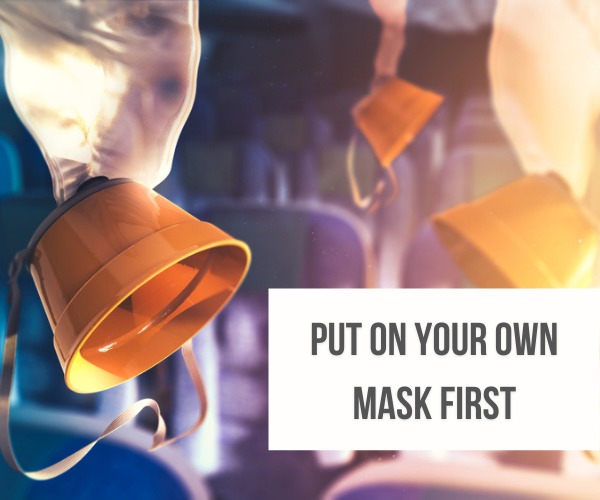The experience of stress and anxiety have become so prevalent in our lives
as a result of these prolonged conditions of threat and minimal social engagement. Human nervous systems are designed to thrive in conditions of safety and connection. Conversely, our continued exposure to crisis makes us vulnerable to internal dysregulation, which can manifest in persistent worrying, heightened anxiety and fear, frustration, anger, mental confusion, and exhaustion. If you have not experienced these moments in the past year, you might not have been living on this planet. We have all been emotionally affected by the pandemic in one way or another. Though perhaps viewed from a different angle, this shared vulnerability that we are experiencing has given us an opportunity to be kinder to ourselves when we’re going through difficult emotions. And it has also opened the door for us to care for each other and extend compassion to alleviate the suffering that we see in people around us.
About 78% of the global workforce reported negative mental health impact from the pandemic (www.thriveglobal.com). This probably does not surprise us. Now more than ever, it has become essential to build a compassionate workplace environment that capitalizes on our common humanity and our inherent human capacity for empathy and connection. We can all be part of cascading support in our workplace community. If everyone is acting on the intention of mutual care, the ripple effect of compassion will become wider and wider, reversing the contagion of toxic stress into that of collective resilience. It does not take extraordinary effort to have a significant impact. But it’s important to keep a few guidelines in mind so that our compassion can become an effective bridge that takes the other person to a state of emotional safety and agency.
The 3 R’s, Regulate-Relate-Reason/Reflect (adapted from Dr. Bruce Perry), is a brain-wise approach to helping co-workers and other people who might be experiencing emotional distress.
Stress reactivity and dysregulation occur when our brain senses danger (real or imagined), triggering an internal alarm state. In a state of heightened arousal, the brain has difficulty engaging its higher capacities of reflecting and reasoning.
When the person seeking support is in an emotionally dyresgulated place (i.e. anxious, angry/frustrated, helpless and stuck) we can be more effective in helping them by responding in a way that brings their nervous system back into safety.
STEPS TO RESTORING SAFETY AND CALM:
1. REGULATE
Calm the flight-fight-freeze response by making the person feel you are fully present and available to listen. Reinforce the help-seeking behavior by saying you’re glad he/she reached out to you. Use a tone and body language that communicates comfort and reassurance. Our nonverbal presence is key to regulation. This includes using a warm and accepting tone of voice, nodding to signal you are actively listening, showing that you are focused and paying attention, and not interrupting what they are saying. When the other person is very agitated, regulating could also take the form of inviting the other person to take a few mindful breaths with you, “How about we take a minute to just breathe to settle our minds?”
2. RELATE
Instead of jumping into problem-solving or advice-giving, focus on listening, providing empathy, and making the other person feel validated. Our anxiety and helplessness can get activated in the face of someone else’s suffering. When this happens, we often push for an immediate resolution to the distress by offering solutions and advice. This can make the person in distress feel invalidated. While they might politely take your suggestions, they are not likely to act on it if there was no genuine sense of being understood or empathized with. Take the time to simply acknowledge and normalize their feelings. Use reflective statements such as, “You’re really feeling isolated and it’s been hard for you to stay motivated with work in this situation.” It is possible to validate the emotion without necessarily agreeing with their perspective, “I understand that it was frustrating when you had to take on more work than you expected.”
3. REASON AND REFLECT
When the person has felt listened to and connected with, the higher parts of the brain become more available to reflect and reason. You may help the person think about concrete steps to address their situation or link them with needed resources. For example, you can help a co-worker figure out how to communicate in a constructive way with their manager or supervisor. You may also invite the person to brainstorm self-care practices that build their inner resource for coping with difficulties. Sometimes it might help to ask a person experiencing a challenging situation to consider what they value and how their actions and choices can be aligned with what truly matters to them. Don’t hesitate to recommend seeking support from a mental health professional especially when there are safety concerns that require immediate attention. Seeing a mental health professional does not have to be the last resort, it can be a resource to tap into to prevent problems from escalating.
There is so much that a compassionate conversation can do for someone who is experiencing pain and difficulty. We are wired to respond with empathy and care to our fellow human beings. And as we provide support to others, it is of UTMOST importance to keep our oxygen masks on. Check-in with yourself after assisting another person, take a pause to pay full attention to how you feel, be intentional in renewing yourself by doing something that restores your energy. Compassion only becomes complete when you don’t leave yourself out of the circle.
Contact us to learn more about trainings in providing safety and support in the workplace.








